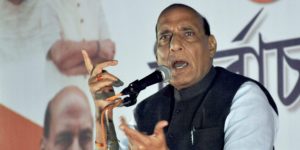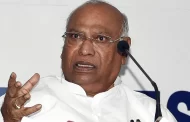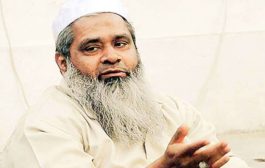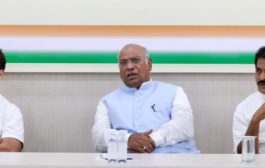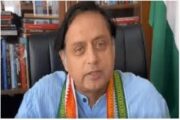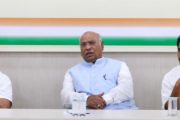Congress president Rahul Gandhi had a meeting with the newly-constituted West Bengal Pradesh Congress Committee (PCC) and its new chief Somen Mitra on Saturday. The signals that the meeting seemed to send out seem, at first sight, equivocal.
When Mitra replaced Adhir Choudhury on 21 September as PCC president, the appointment was widely seen as an attempt to clear the decks for an understanding with the Trinamool Congress. Chowdhury has always been steadfastly against the Trinamool Congress and his personal animosity against its boss Mamata Banerjee is well known. Mitra is, however, seen as a more flexible leader. Even though Mamata parted ways with the Congress while he was president of the Bengal unit of the Congress, he had later left the party and briefly joined the Trinamool as well. He thus has connections with the ruling party.
On assuming office, Mitra had initially been guarded. He had not categorically ruled out the possibility of joining hands with the Trinamool, but he had said that even though an alliance with the party would yield fruits in the short term, it would not be wise when seen from a long-term perspective. He had also said that the Congress needed to steady its ship before entering into any alliance.

After the meeting, Mitra reiterated his position that the party must find its feet before thinking about an alliance, which suggests that this view was endorsed by the party president.
All this rhetoric about dignity and self-sufficiency may sound good, but it hardly masks the fact that the Congress has a long way to go before it finds its feet in Bengal. It won’t happen in anything resembling a hurry — certainly not before the time comes to take hard decisions in the context of the 2019 Lok Sabha election.
The facts speak for themselves. The Congress had a presence in only two districts: Malda and Murshidabad. In the 2014 Lok Sabha election, its voteshare was just under 10 percent, less than that of the Left Front or Bharatiya Janata Party (BJP). It got four seats (the Left Front and BJP got two each) because its votes are concentrated in these two districts. In the 2016 Assembly election, its voteshare was 12.3 percent, but it was in an alliance with the Left Front, which doubtless boosted the share of its vote.
In the interim, several things have changed. In this year’s panchayat elections, the BJP emerged as the second largest party in Bengal and the only credible opponents of the Trinamool Congress, supplanting the Left Front. Although the dynamics of the panchayat and Lok Sabha are obviously different, no one seriously doubts that the outcome of this year’s elections will be replicated in 2019.
More important, the Trinamool Congress has destroyed the parent party’s redoubts in Malda and Murshidabad. In Murshidabad, the Congress was wiped out, with the BJP limping to the finish line way behind the ruling party. In Malda, it fared somewhat better, but it is clear that the Trinamool now holds the whip hand in that district as well, with the BJP eating into Congress support.
If the Congress decides to fly solo, it is unlikely that it will win anything in Bengal; Rahul’s zero out of 42 seats worst-case projection could play itself out. It may, at best, win one seat. Even if the party ties up with the Left Front, its prospects don’t look great. The combined voteshare of the two was 31 percent in 2016. Since then, both the Left and the Congress have significantly lost ground — the first to the BJP and the second to the Trinamool.
If the Congress decides against entering an alliance with the Trinamool, it will succeed in inconveniencing the ruling party to some extent, especially considering the fact that the BJP’s challenge is becoming more credible even though it is far yet from being a real threat.
The question is: Is there any percentage in following for the Congress in following such a strategy?
The answer is: Probably not.The Congress has to contribute saliently towards stitching together a nationwide Opposition alliance against the BJP. Who can contribute more to this enterprise? The Left, which is likely to win not more than 10 seats in 2019, or the Trinamool, which is likely to get around 40 seats? The Congress ‘high command’ must ask of itself a fundamental question: Is it worth pursuing the chimera of self-sufficiency in Bengal just to make a point at the cost of losing a valuable ally on the national stage?
The answers will, or should be, plain to the high command, which is why, presumably, Chowdhury was replaced with Mitra. One does not know what Mitra was thinking when he reported Rahul’s reluctance to impose New Delhi’s views on the PCC, but from where we stand it does sound like a bit of a joke.
The Congress high command has been imposing its views and leaders, like Mitra, on PCCs for four decades or so. Nothing has happened that we have been informed about yet that could have transformed the Congress party into a party imbued with the spirit of inner-party democracy. Don’t be surprised, then, if Rahul’s next significant statement on Bengal announces an alliance with the Trinamool Congress.
source: Firstpost.com

